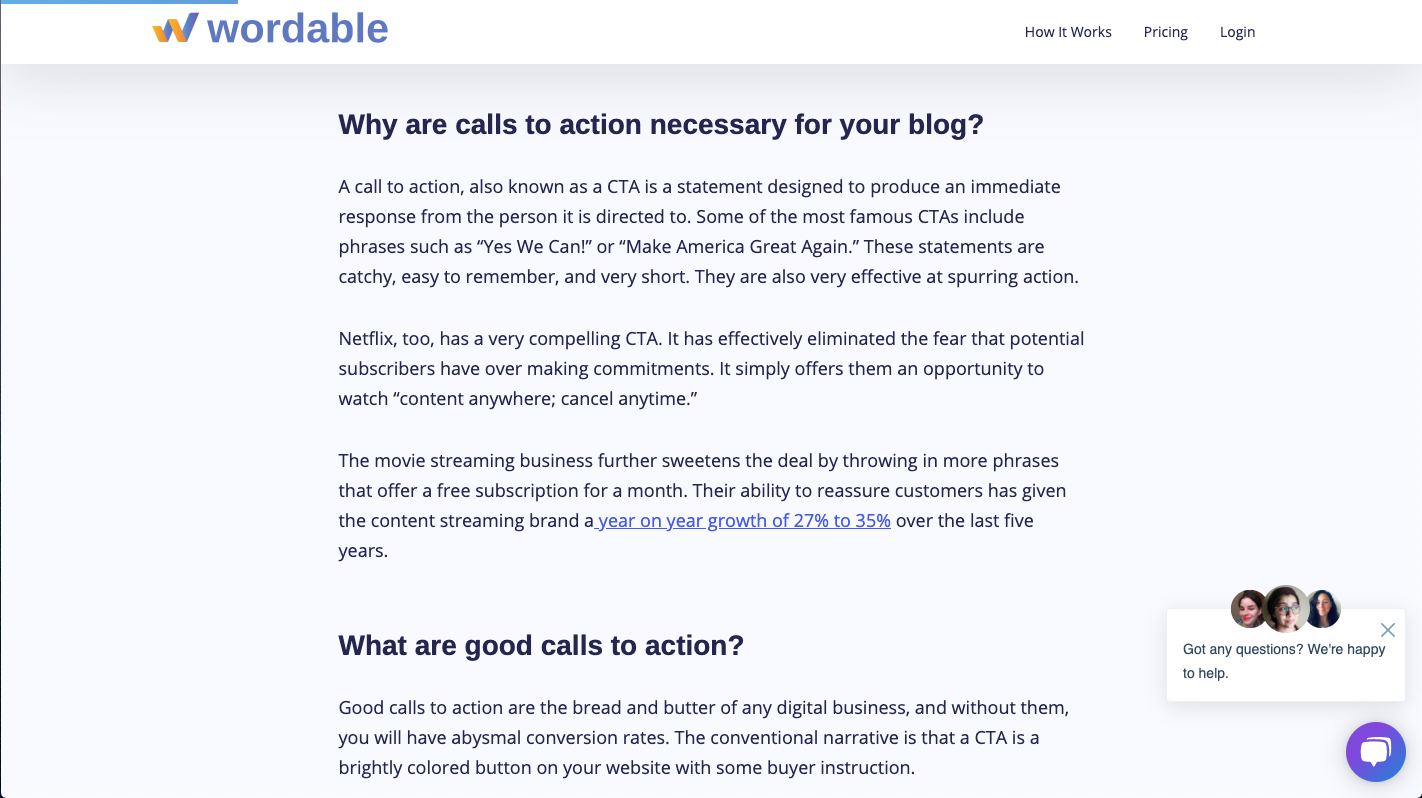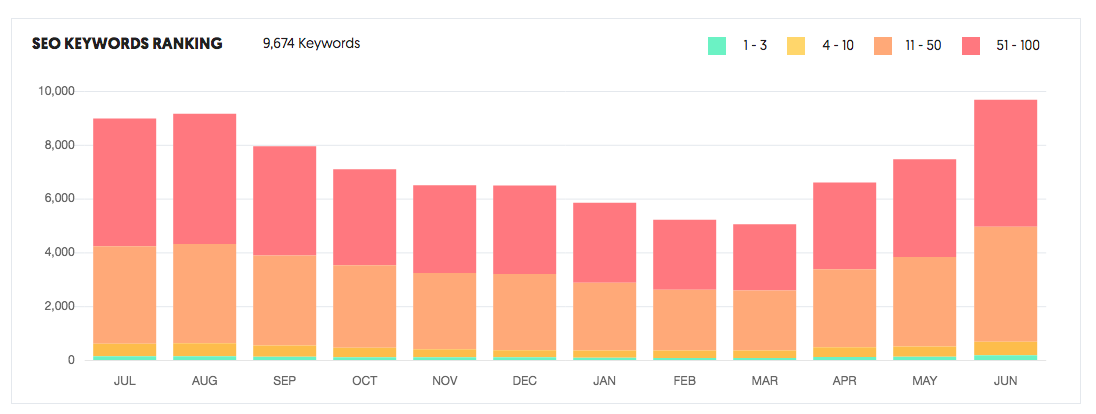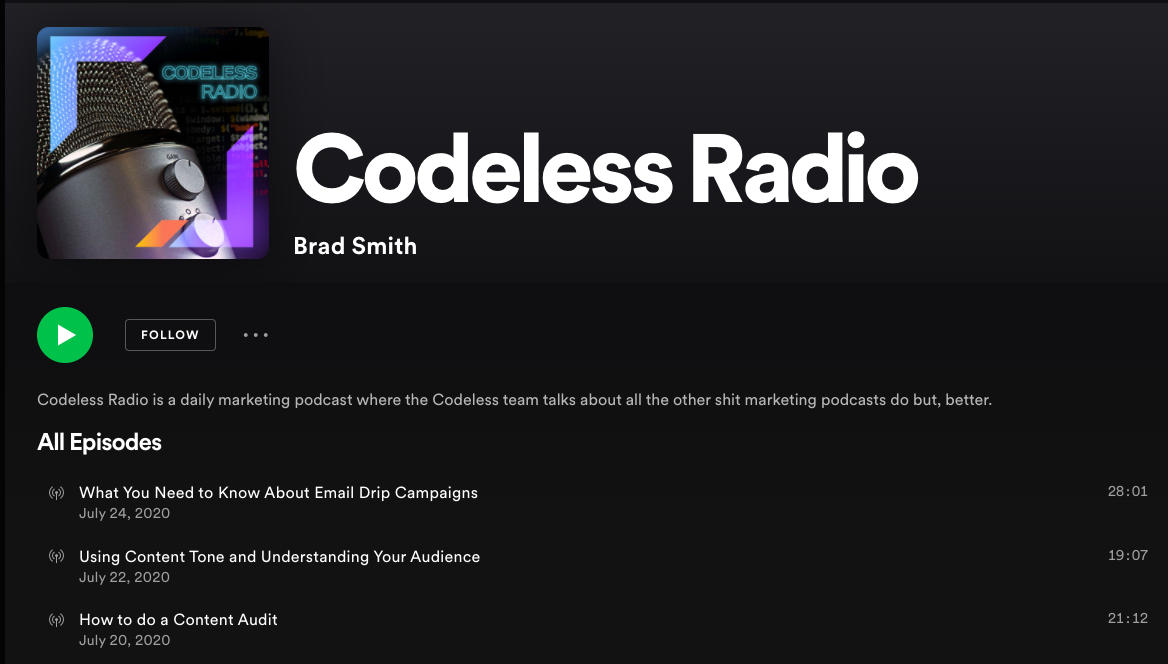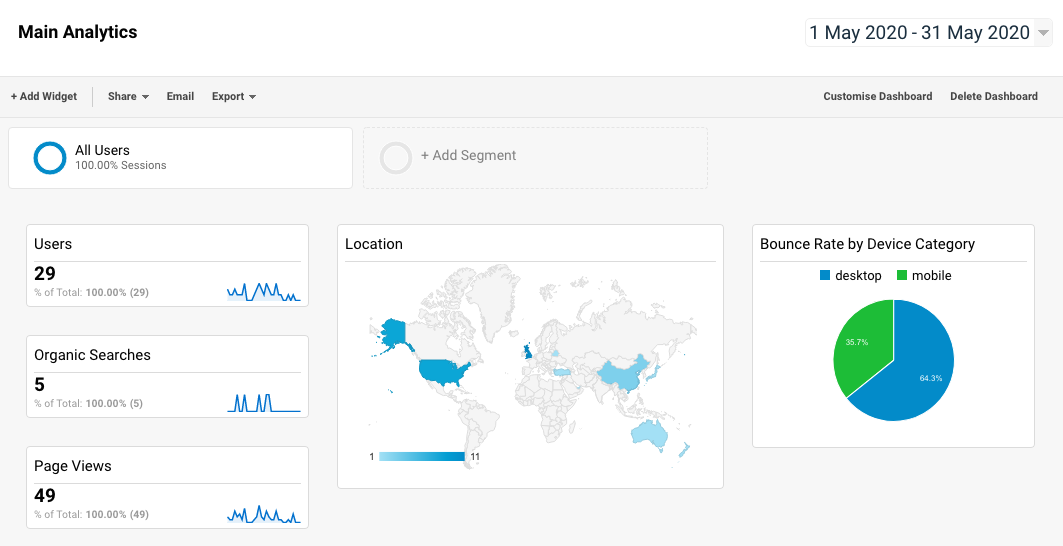
SaaS content marketing gets your brand (and product) in front of the right people.
But it’s overwhelming for readers to see the same topics, content, and case studies over and over again.
How can you expect to convert customers with content marketing?
The answer lies in doing it all better.
Once you understand more about the unique marketing struggles in the SaaS industry, it’s easier to decide on a winning SaaS content marketing strategy.
And once you apply a more innovative approach to content marketing, you begin to stand out among your competitors.
In this post, we’ll show you some of the most effective content marketing strategies for SaaS professionals.
We’ll also go through how to properly measure your success to overcome your competition.
Effortlessly export your Google Docs to WordPress with just 1-click.
Get Started TodayContent marketing in the SaaS industry works because it puts your brand in front of your ideal audience.
How you interact with the reader is secondary.
For example, you could promote your product through a blog post using real life stories and relevant examples.
Or, you could focus on education via social media.
Your typical SaaS founder is notorious for using jargon and tech which can cloud and confuse some readers or potential customers.
But one benefit of content marketing is that you can scrap the difficult language and simply hone in on providing value.
This no-frills approach can increase their desire to buy and move your reader down the click funnel towards making a purchase.
You’re not promoting overtly, but subtly.
Your content shouldn’t feel like a sales pitch.
Rely on your branding research and use language that your audience uses.
On that note, it should be understandable and relatable.
51% of content marketing materials are now viewed on mobile devices where larger screens are a luxury not afforded.
Not only does your formatting have to adapt, but your readers will want to keep it simple if they’re on social media.
So, do them a favor and don’t use jargon.
A SaaS marketer with a strategy sees 30% higher growth rates for than those who don’t plan.
It helps to have a clear process at each stage of writing.
Create standard operating procedures for your topic and keyword research, your outline, writing, editing, and publishing.
Making use of a CRM system is a popular choice among the biggest SaaS companies, with 54% choosing WordPress to manage their content marketing.
95% of people plan to buy from a business they follow, but 52% of bloggers are finding it harder to get readers to engage with their content.
So take a customer-based approach.
Survey your current consumers or go through testimonials.
Content marketing is effective when you highlight the applications of your product to a real problem that your audience faces. That’s how you’ll generate organic traffic.
So focus on solving their problem!
As a SaaS business, Wordable knows that the people who use our software are usually bloggers.
As such, we create content that makes sense for bloggers, like “How to Create Call-To-Actions that Convert,” written specifically for a blogging reader:

This is effective because it shows that we understand the problems of our audience.
Better yet, we are actively striving to provide value to help our readers solve these problems, alongside the main solution of our product.
Competition in the SaaS industry has never been fiercer.
With around 1,000 new SaaS businesses created each year in the US and 211 million pieces of content published each minute, your SaaS has never been under more pressure.
So what can you do?
In this section we’ll give you two actionable strategies for how you can stand out from your SaaS competitors with excellent content.
In order to stand out, you need to be visible.
This means appearing at the top of your audience’s searches.
Do your research to select the right keywords for each of your topics. Make sure these align with the buyer persona for your SaaS product.
Weaving them naturally into your writing will allow you to answer the question and provide value to your reader.
Having these technicalities will also react well with the algorithms used to run search engines.
Codeless is a content marketing agency and currently ranks for almost 10,000 keywords.
They also appear on the top page in 2,738 cases.
This almost guarantees each Codeless blog post to get views from customers who weren’t aware of their services before.
Avoid keyword stuffing, this will flag your content as spam to search engines like Google and can harm your overall rankings.
Write for humans rather than machines and algorithms.
Having a high bounce rate because your page is irrelevant can be just as harmful.
The average bounce rate in a b2b setting is around 55%.
So, targeting your blog topics properly should put your bounce rate below this.
If you’re a bigger SaaS business, you might have entire departments filled with backlink builders, content marketers, or inbound marketing specialists.
This allows for quality checks on each article as part of the schedule.
But those resources aren’t available to everyone.
One of the easiest ways to keep up with the consistent production of your larger competitors is to invest.
High investment can lead to high reward.
For example, investing $19 a month in Wordable can significantly decrease the time it takes to upload, format, and publish your blog posts.
Imagine cutting down formatting time from 2 hours to 5 minutes. It’s an increase in productivity of 2300%.
What would you do with all that extra time? Having a big SaaS company to manage comes with financial operations you need to manage as well, but thankfully, by using a SaaS payment provider you can streamline this task and focus your extra time on what matters most.
We all experience writer’s block, and the phenomenon can make coming up with new topics and ideas difficult.
But in SaaS marketing, consistency is important.
Because 67% of bloggers who posted content on a daily basis reported “strong results”.
Keeping your content output consistent will make sure that your SaaS business is constantly in front of its audience.
Not only does this aid brand awareness, but it is also likely to accumulate in sales later down the road.
A blog post isn’t the only way to reach your potential customer.
Prospects are likely to respond differently depending on how well they know your brand and how far down the sales funnel they sit.
So, producing more than one type of content allows you to cast a wider net and catch a potential customer at every level.
These days, 55% of customers want to see video content from the brands they support.
Video can boost your brand by adding a human touch.
It’s what SaaS company Moneybox has done in their recent crowdfunding campaign to highlight each of their founders and add personality to the brand.
Part of the reason the campaign is so effective is that it incorporates a video testimonial from a current investor. Also, video testimonials can help SaaS companies build trust with potential customers and boost their brands. One way to get started with this powerful marketing tactic is to use software to collect testimonial videos from existing customers.
This builds trust with the viewer and increases the likelihood of purchase.
It can also help to qualify sales leads.
Often, a SaaS company can rush to produce content, being inconsistent and loosing track of details in their approach.
It may mean that their marketing materials reach irrelevant prospects, which later damages metrics and KPIs.
This is why 22% of B2B organizations are interested in podcasting to help further qualify sales leads.
Using a chattier medium allows you to clearly outline who the product is intended for and the occasions where it helps.
This enables SaaS marketing to more easily move prospects through the sales funnel.
To end with sales, you must start with lead generation.
There are several ways that a SaaS company tends to generate leads:
You’ll find these methods at the top of a sales funnel.
Use them in exchange for information such as an email address, where more targeted content marketing can then take place.
Email marketing tends to be more reliable than some other forms of content marketing because you are sending a direct link.
This means you can avoid waiting for potential customers to search for your website.
But, as mentioned before, personalization is key.
In fact, B2B companies who segment their email lists report 14% higher open rates than those who don’t.
So, whether you’re podcasting or emailing (I’d suggest both!), make sure that your approach fits the voice of your customer.
This is the trick to moving them down your conversion funnel and achieving those all-important sales.
Last year, more than 60% of B2B marketers said they struggled in measuring the success of their organic content strategy.
It’s hardly surprising when you scan the big analytics softwares and note that there are hundreds of different numbers.
Which values are important for SaaS marketing?
When measuring sales funnel success, there are three factors which will help you get a good overview:
Engagement
Engagement is the key metric for your content marketing.
It looks at how your potential customers interact with your brand.
It helps you to learn more about their pain points and later target this to improve your relationship and build trust.
Some example KPIs you could track include:
Bounce Rate
The bounce rate reflects the number of users who only view one page on your site before clicking off.
It will indicate how effective you are at targeting the people you want to reach.
If the score is low, your keyword targeting might be off, or you could simply not be answering the questions that your clients are asking.
Share Rate
This shows the virality of your content.
Granted, share rate isn’t important for content such as email marketing.
But share rate should be examined for social media-friendly content such as videos and podcasts.
It shows how well your content resonates with your audience.
The higher the shares, the more engagement you are receiving.
Analytics
Google Analytics is probably the simplest way to get an accurate overview of your site, pages and content successes. 
Once you decide on the most relevant content marketing analytics, we recommend compiling them into a personalized dashboard to gain the best overview.
How do you read, track, and change after reviewing analytics?
Put together your budget and a detailed approach.
TopTarif intended to expand lead generation from members of their ideal audience who weren’t yet connected.
The company intermingled its organic content strategy with paid search to maximize the budget available.
They tracked progress using Google Analytics and tweaked the campaign according to feedback.
The team focused on form completion to work out the cost per click for paid ads.
TopTarif managed to increase their conversions by 130% using Google Analytics feedback.
But Google Analytics isn’t the only option – there are several alternative SaaS analytics choices at various price points.
From Kissmetrics to OpenWeb Analytics, it’s worth exploring all the choices if you’re serious about tracking your content strategy.
It’s become increasingly tempting over recent years to revert to a paid marketing strategy.
But organic traffic still exists, and when done well, content creation is almost always guaranteed to build more trust with your customers.
This trust is what fuels your sales and builds a retained client base who will return to you again and again.
Sorting out your SaaS content strategy might be complicated now, but once you’re clear on content marketing, you can begin to reap the rewards.
So, whether you’re blogging, podcasting, emailing, or something else; remember to stand out from your competitors and rely on feedback from metrics to inform your strategy.
Because getting in front of your ideal audience is only half the battle!